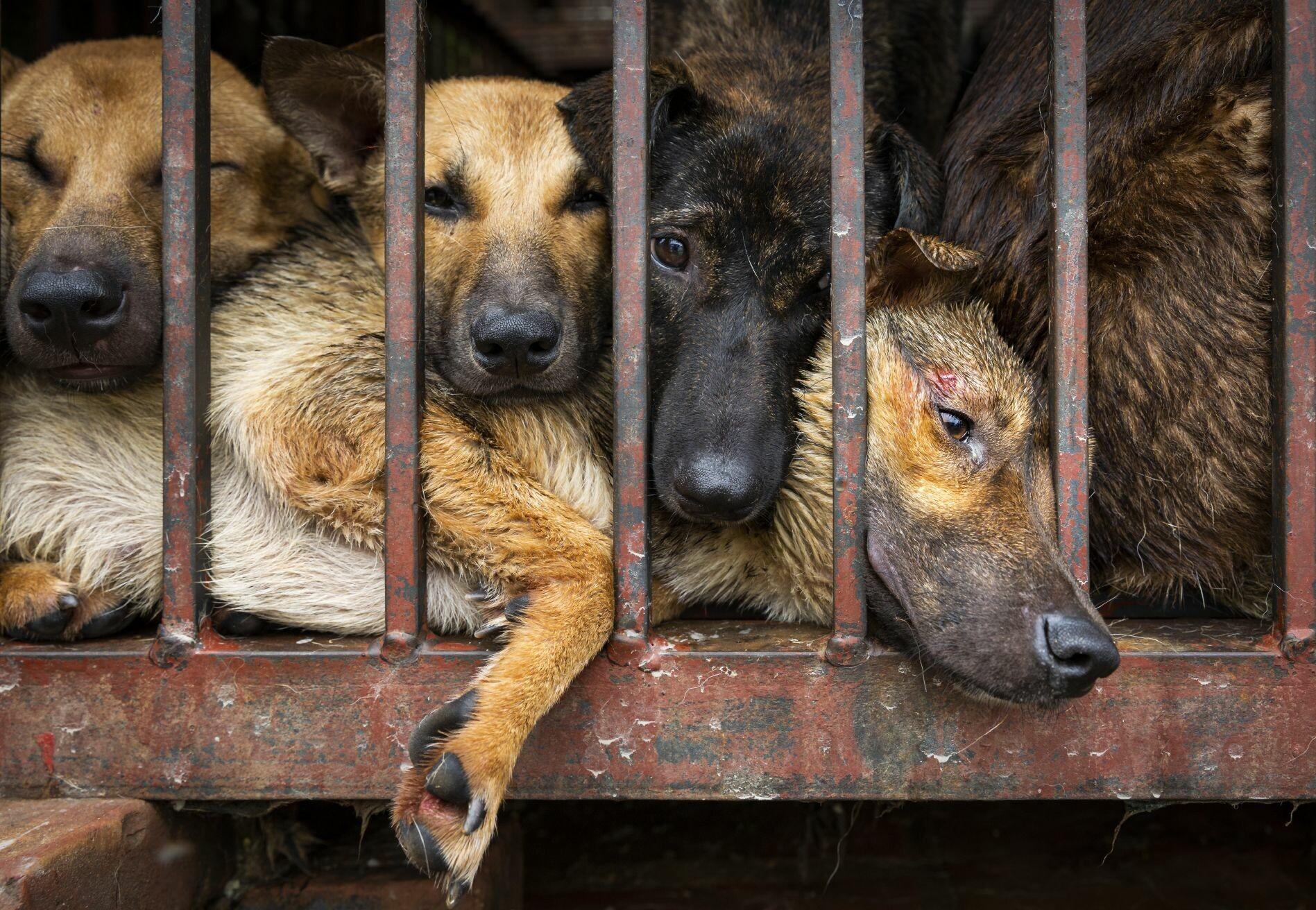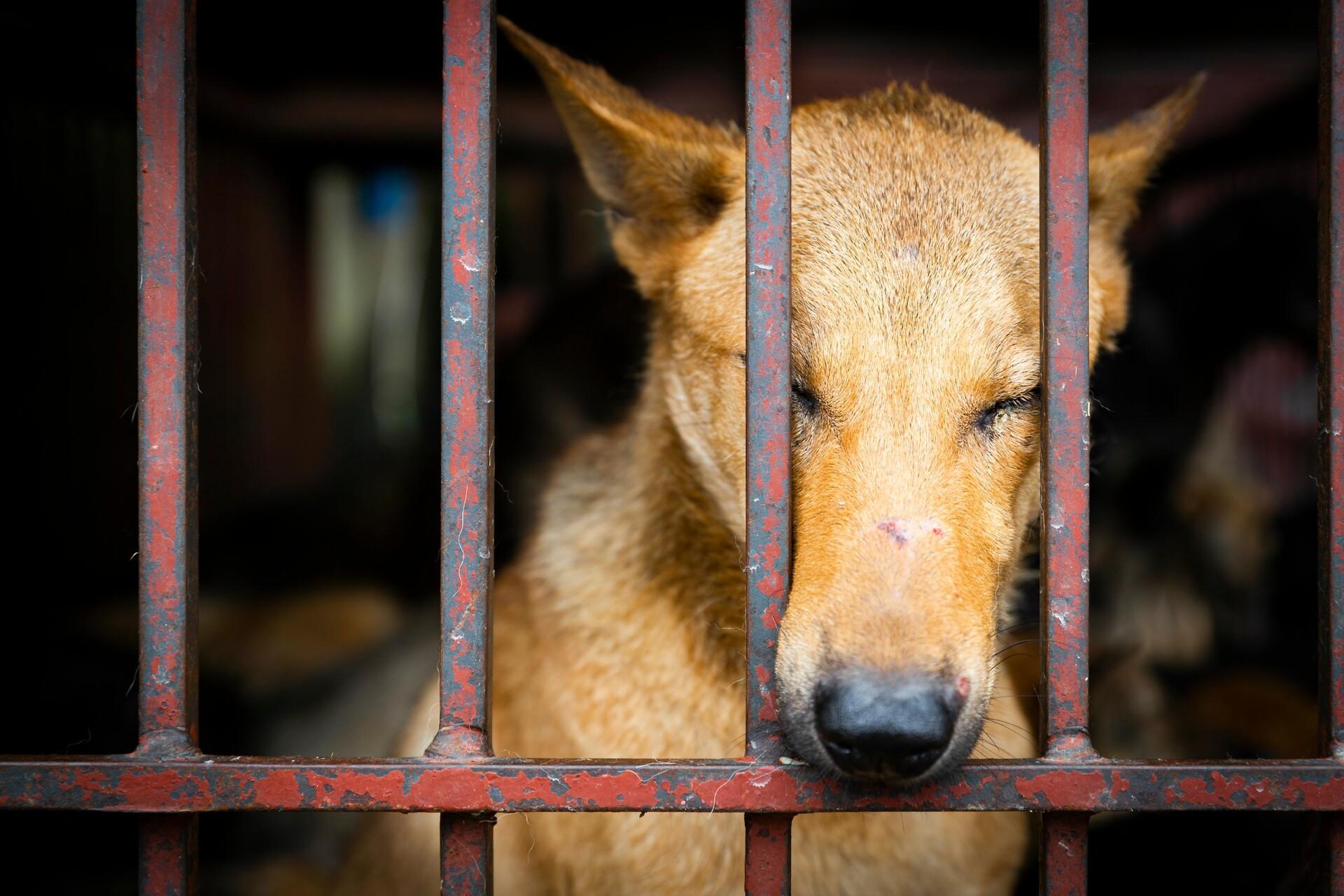
The Facts
Information about the cruel dog and cat meat trade in Southeast Asia
The dog and cat meat trade is one of the most pressing companion animal welfare issues of our times. The trade results in horrific cruelty to an estimated 30 million animals per year in Asia, including an estimated 10 million dogs and several million cats in Southeast Asia alone. Investigations have documented the severe brutality in all stages of the dog and cat meat trade including how the animals are captured, transported, sold, and finally slaughtered.
Many of the animals used to supply the trade in Southeast Asia are stolen family pets or stray animals collected from the streets and rural villages. These animals are snatched from their families who are left behind in tears, worried sick about their beloved companion knowing the fate they face having been taken for the trade.
Motivations for Consumption
There are a variety of reasons why people in Southeast Asia state that they consume dog and cat meat. For the most part, dog meat is consumed during social gatherings involving alcohol. Other reasons given for dog meat consumption are nutrition, sustenance and energy, to warm their body temperature in the cold season, and because it was recommended to them by doctors or through word of mouth for its healing and medical properties. In areas of Vietnam where cat meat consumption is prevalent, diners report that they most commonly eat it at the lunar month for good luck.
Changing attitudes
Dogs and cats are increasingly being viewed as members of the family rather than as food, and the overwhelming majority of people in Southeast Asia do not eat dog and cat meat. Local opposition to the cat and dog meat trade is growing amongst the younger generation who do not see this as part of their culture and governments are beginning to recognise that this is an issue that must be dealt with!
Warning: Some of the following images may be disturbing for you
A stolen pet’s journey in the horrific dog and cat meat trade
1. Theft
Every day in cities across Southeast Asia, pets and stray dogs and cats are brutally snatched by ruthless traffickers looking to make a profit. Armed thieves patrol neighborhoods stealing pets from their yards or who are roaming the streets, and threatening pet owner’s lives as well.. The snatching of cats and dogs has created intense societal unrest in places like Indonesia and Vietnam as people are sick and tired of having their pets stolen, and in some cases have resorted to violence to stop pet theft in their communities.
Cats and dogs are snatched in a variety of ways. Thieves often ride around on motorbikes with cages attached to the bikes, lassoing unsuspecting animals around the neck with wire snares, and dragging them down the street until they are unable to fight back. Thieves might also approach a dog and continuously club it over the head until the dog can be picked up and put into a cage. Poison is also commonly used – in Indonesia, cyanide laced meatballs are thrown to unsuspecting dogs. In Vietnam, dogs are electrocuted using homemade stun guns or shot with ‘poison’ darts laced with succinylcholine chloride. Cat thieves strategically position snares with food to catch outdoor roaming cats.
Pet owners often complain of being scared to go outside and having their lives threatened by the thieves. They report not being able to walk their pets in fear of having them snatched. In Indonesia, pet thieves are relentless in their pursuit of terrorizing communities to steal pets for the trade.
Many dogs and cats end up at markets and restaurants still wearing collars, signs of their former lives as pets.
2. Trading
Dog and cat meat traders also drive through villages exchanging pots and pans for unwanted dogs and cats. Often dogs which are sick, old or have behavioural issues are sold into the dog meat trade. Sometimes even puppies, if they are unwanted. Given the limited spay/neuter capacity in most areas of Southeast Asia, there is almost always a surplus of unwanted puppies and kittens born each year, which feed the dog and cat meat trade.
3. Transport & Holding Areas
Dogs and cats are roughly handled and crammed into cages and sacks so tightly that they can’t move, their mouths bound shut so they can hardly breathe. Crammed together on trucks or on the back of motorbikes, many suffer from broken bones, exhaustion, and heat stroke before reaching their final destination at slaughterhouses, markets and restaurants. The journey can often last days and span hundreds of kilometers without food and water. Many die along the journey, some from being crushed by the weight of the others. For those that survive the journey, it always ends with a horrific death. Terrified dogs and cats are forced to watch the slaughter of other animals right in front of them, awaiting their turn.
Prior to slaughter, some dogs might be brutally force-fed with rice by having a tube forced down their throats, in an effort to increase their market weight and price, others may be beaten in the mistaken belief that this tenderizes their meat.
4. Slaughtering
The slaughtering of cats and dogs is crude and barbaric. The most commonly used techniques include drowning, bludgeoning, stabbing, boiling or blowtorching animals while they are still alive. While awaiting slaughter, dogs and cats are held in filthy pits and cages; their fear unimaginable. Individual animals are grabbed one by one with large metal tongs to lift them out of the cage to be killed.
For those that are to be drowned, dogs and cats are transferred into smaller holding cages to be lowered into a filthy pit of water until they are dead.
Drowning
Drowning is a common method of killing given its ability to kill large numbers of animals at once, with minimal noise. Prior to drowning, dogs and cats are commonly kept in a larger cages for days, and then transferred into smaller cages that fit into the drowning pit. Drowning causes prolonged agony and suffering, as dogs fight to get air. After about 15 minutes of submersion, the cage is raised out of the water, the drowned dogs and cats are removed, and preparations are made for fur removal.
Hanging/Strangling
The hanging or strangulation of dogs is a common way of killing individual animals. The noose is put around the animals' neck while they are in the cage and then yanked tightly, suffocating the animal. Dogs will often break their teeth on the metal bars of the cage in their vain efforts to break free from the noose.
Stabbing/Beating to death
Many dogs are clubbed over the head (frequently not achieving unconsciousness but rather just being hurt) and then stabbed in the throat. Dogs are often hung upside down when they have their throats slit, allowing drainage of blood into a bucket. This is often then used for gravy. The time to death can be more than 5 minutes, during which the dog suffers immensely. In other instances, dogs are tied up in bags and beaten to death.
Blowtorching
At the live markets of North Sulawesi, Indonesia, blowtorching is a common way of slaughtering cats and dogs. The animals are first clubbed over the head and then blow torched. During our visits, every animal we witnessed was blowtorched while still conscious and some were even trying to get up. The sound the dogs make is particularly harrowing, these animals can not scream but they whimper in severe agony as their lives come to an end.
5. Fur removal & Carcass preparation
Before being sold to restaurants, the animal’s fur must be removed. To do this, dogs and cats are plunged into boiling water (some while still alive), and the fur is ripped off either with the butcher’s hands or a knife. Cats might either be boiled or placed in a poultry de-feathering machine. In other instances, a blowtorch is commonly used to scorch the hair off of the body. After the removal of the fur, the animals are prepared for consumption.
6. Dog and cat meat restaurants are openly advertised on the streets of Indonesia, Vietnam, and Cambodia
Most serve only dog and/or cat meat. Many restaurants purchase dogs from wholesalers pre-killed, while others keep small numbers of dogs and cats on-site, and kill them on demand. Animals are kept in inhumane conditions in overcrowded cages in the back of restaurants, frequently waiting for days for slaughter, with no food or water. In Cambodia, dog meat goes by the name ‘sach pises’ (Special Meat), in Vietnam thịt chó, and in Indonesia RW.












